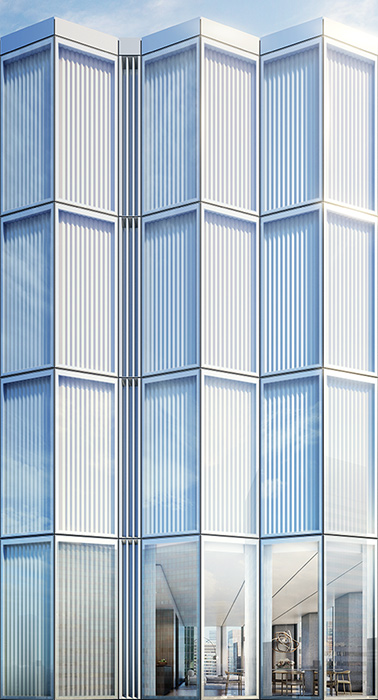No developer who truly respected architecture would release a rendering like the one for One Hundred East Fifty Third Street that Aby Rosen has chosen to share with the world. By only offering us this restricted and partial view for now, he seems like someone with something to hide. Is he withholding the full view because he thinks it is so good? Possibly, but not likely.

A rendering of One Hundred East 53rd Street (Credit: Foster + Partners/DBOX)
This latest project is the work of Lord Norman Foster, who has been quite active in New York City in recent years and whose design ranges from masterful to mediocre to just plain dull. His best work is in London: the Great Court at the British Museum is a miracle of modern design, while his iconic Gherkin Building and London City Hall are brilliant in overall conception, even if their actually fabrication feels a little skimpy.
In New York, he is more apt to range from mediocre to dull, from the respectable Hearst Tower and The Upcoming 425 Park Avenue and 2 World Trade Center (if it ever is built), to the humdrum eight-story Sperone Westwater Gallery on the Bowery and the even-more-blah 551 West 21st Street.
His latest project, formerly known as 610 Lexington Avenue, looks likely to err on the side of corporate respectability, like the Hearst Tower. With 94 condo units, it appears from the rendering to consist of a sequence of bays running up the length of the building. These are divided up into triangulated modules separated from one another by a white trim and are, on the basis of the rendering, the best part of the design. Its eventual success will lie, of course, in the execution — even the best design can be vitiated by value engineering.
Taken together, however, the modules constitute a curtain wall of sorts, but because they project from the surface at an angle, each window has a view in two directions simultaneously. Beyond that variant on the classic curtain wall—which may have interesting implications as real estate and as inhabitable space in a city where flat facades favor only a unidirectional view—the design looks good enough, but it hardly promises to be as remarkable as Lord Foster’s best British work. As to the ultimate success of the design, we may not know until it is approaching completion, and by then it may be too late.
